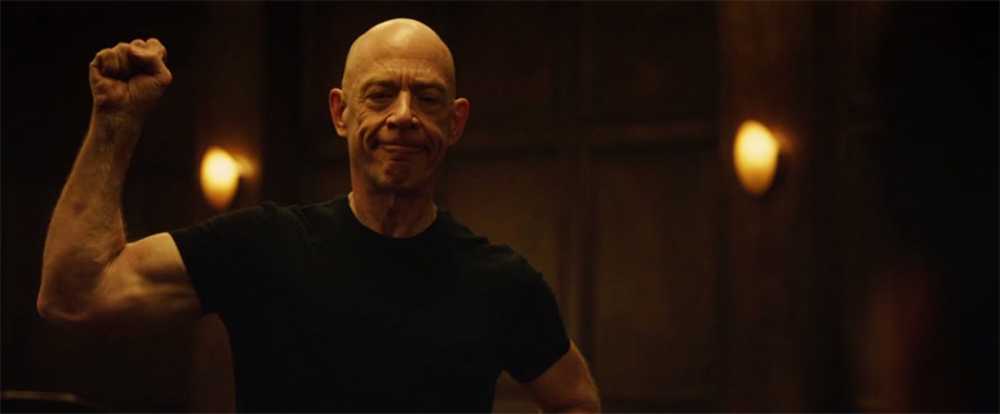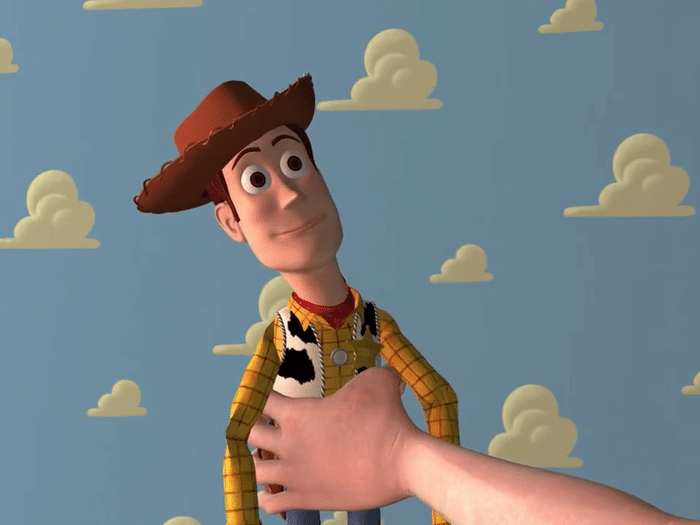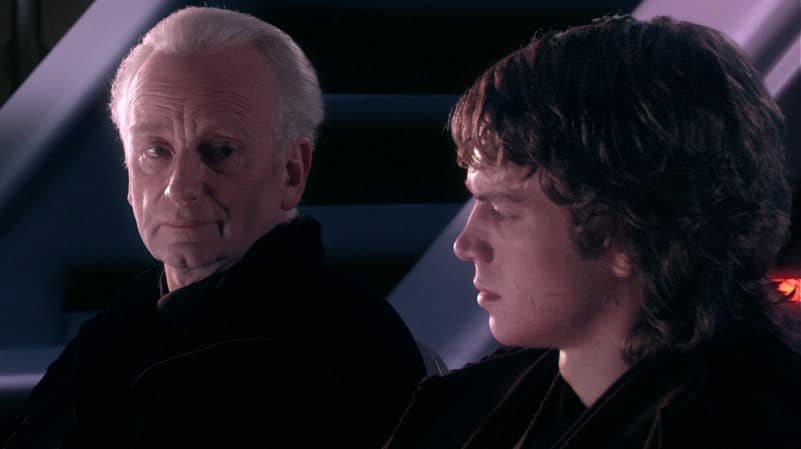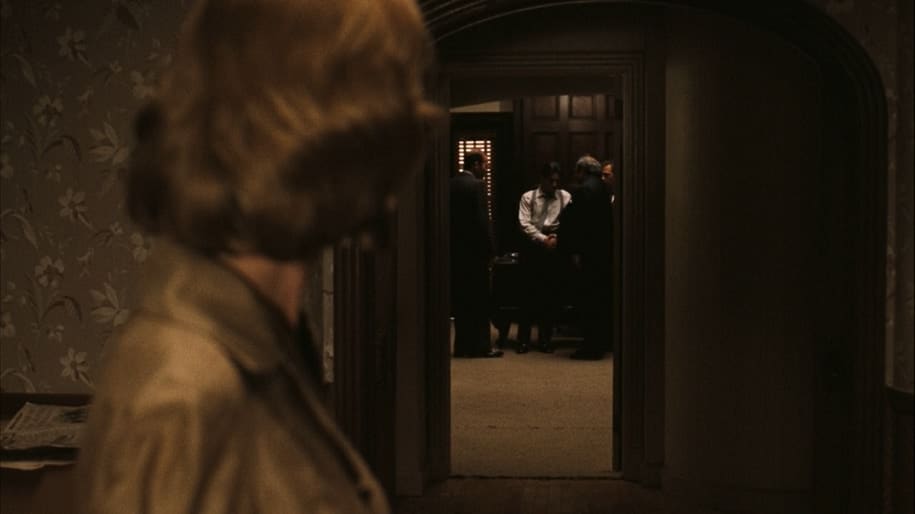Table of Contents
- Story Ending: The Most Important Part of Your Screenplay
- Know Your Story Ending Before You Start Writing
- Finding a Story Ending That Fits Your Screenplay
- Setting Up the Climax of Your Story Ending
- The Ultimate Choice Between Want and Need
- The Climactic Moment
- The Character’s New World Begins
- The Story Ending Answers the Thematic Question
- The Power of the Final Image
- In Conclusion
Story Ending: The Most Important Part of Your Screenplay
Any successful screenplay endeavours to tell the story of a character’s journey. A crucial part of that journey is the story ending. The final pages and scenes are the last moments that you ingrain into an audience’s memory. They are what the audience will be thinking about long after the credits have rolled.
Audiences use cinema as a means to escape into different worlds and to experience emotions through the lives of the characters on screen. They want the thrill of cheering when the hero defeats the villain, they want to cry when the character’s hearts are broken and they want that sudden realisation when the protagonist finally understands what they were missing all along. A story’s climax and resolution is where all of these cathartic experiences take place.
In the climax of your screenplay, you reveal what the journey was all about. Furthermore, you reveal why that journey has turned out to be worth all the struggles and trauma. You raise the stakes to the highest level and provide your protagonist with the most difficult barriers they have ever faced.
The resolution of your story is the turning over of the old world and the creation of a completely new one. It’s the completion of your character arcs and the answer to the theme of your screenplay. If all of this sounds daunting, don’t worry. We’re here to show you to write a story ending that will both leave your audience satisfied and wanting more.
Know Your Story Ending Before You Start Writing
Before we begin to examine the keys to writing a complete and satisfying story ending, there is something you must first avoid at all costs. Some screenwriters don’t believe you need to know the ending of your screenplay before you start writing. They believe that the characters themselves will somehow write their story ending for them or that their ending will grow out of the story.
This technique doesn’t work well in screenwriting for two reasons.
- You only have a limited number of pages to tell your story. You do not have the luxury of searching through ten or eleven pages (like with a novel), following a character in the hopes that the ending will reveal itself to you.
- Your story must always be moving forward. The plot must follow a path, a line of progression from beginning to end. If you don’t know where your screenplay is heading then there will be nothing that drives the story forward.
This does not mean that you have to know the specific details of your ending when you sit down to write your screenplay. However, you have to know what will happen and how this will affect your characters. Otherwise, you’ll struggle to plant payoffs, twists, turns, and foreshadowing in the first and second act.
When you’re laying out your character’s journey, act by act, scene by scene, you must first determine its resolution. If you go into the writing process with no destination in mind, it’s inevitable that you’re going to lose your characters along the way.
Finding a Story Ending That Fits Your Screenplay

If you have absolutely no idea how your story is going to end, then ask yourself two things.
Firstly, what are the ways my story could be resolved?
- Look to the basic premise of your screenplay and the goal your protagonist is pursuing. Determine all the possible outcomes to their journey.
- Don’t be attached to any single shot, scene or sequence as you may start to funnel the storyline towards your perfectly imagined closing moments.
- Go through the action of your story and in free association begin to list the ways your film could end. Does your character live or die? Do they get married or divorced? Once you know all the possible destinations, you can decide which path you will take.
Secondly, what are the guidelines or expectations of the genre you are writing?
- There’s no definitive answer to what type of ending you should choose for your script.
- However, say an audience is watching an action fantasy film like Lord of the Rings for example. They are there to see an expansive journey into a fantastical world and to see the heroes triumph over evil.
- Imagine if the filmmakers ended the trilogy, after three movies of struggles and conflict, with Sauron reclaiming the ring and conquering Middle Earth. The audience would feel cheated and would leave disappointed.
- So take note of what genre you’re writing in and what audiences expect.
Peter Jackson decided to end LOTR with Frodo’s goodbye because it gave the audience the cathartic experience of a bittersweet ending. Sad endings have a purpose; they move us, they make us cry. We say goodbye to Middle Earth with the hobbit we’ve followed throughout and appreciate the journey we had with him.
Setting Up the Climax of Your Story Ending

Now that you understand the importance of knowing the final destination of your character’s journey, you can get to work on preparing them for the climax of your screenplay.
This section of your story is all about intensity. The conflict is heating up and your protagonist is hurtling towards their inevitable confrontation with the antagonistic force.
- The final pages before your climax should be filled with excitement and fraught with tension.
- It’s also all business, as you focus on getting all the pieces, both character and plot, assembled for the final showdown.
- Your story’s beginning ignites the primary conflict and sets your protagonist off on their journey. The second act increases the intensity of the conflict and build-up of tension. The climax is there to release that tension.
Screenwriters often depict the climax via a final confrontation between the protagonist and antagonist. But it can take on any form you see fit. What it must do, however, is resolve the main conflict of the story and be the moment the main character reaches (or fails to reach) their goal.
If a climax does the job it’s meant to do, your audience will be satisfied that the conflict is resolved and the protagonist is reaching the end of their journey, even if it’s not the outcome they were hoping for or anticipating.
When your climax falls short of your audience’s expectations and offers no resolution to your character’s main problem, it is an anti-climax. Therefore, it is vitally important that you set up the climax the right way.
Using Whiplash as an example, we will examine three crucial elements that can guide your character’s journey leading up to the final climactic moments of your screenplay.
1) Up the Stakes
- If there is nothing serious at stake for your character then your story becomes meaningless. Attaining their goal must be the most important thing in the world for them. If not, why should an audience care?
- As they reach the end of their journey, you must create a series of setbacks and false victories that force your character into making difficult choices. This in turn helps ramp up the tension of your story ending before its climactic breaking point.
- The character must choose between surrendering to their pain and rising to continue the fight. They must realise that the price they will pay in order to achieve their goal is worth all their suffering.
The story of Whiplash follows Andrew in pursuit of becoming a world-famous musician at all costs. He practises day and night, until his hands are bloody, drilled on by the most abusive college jazz instructor, Terence Fletcher. Throughout the third act of the film, the protagonist faces an ever-growing list of setbacks that continually up the stakes of his story.
- He forgets his drumsticks before a performance and he crashes his car whilst rushing to retrieve them.
- He is then late, botches his part, attacks his teacher and is kicked out of his music college.
Despite all of these major obstacles, however, Andrew continues to fight for his goal. We enter the climax of the film at a final decisive performance. This is his last chance to prove how good of a drummer he is. The stakes couldn’t be higher for his character.
2) Prove How Far Your Character Has Come
Before the climax begins, your character may be feeling as if they are making no progress at all. But, of course, that is not true. They have made tremendous progress; the person they are now is miles away from the person they were at the beginning of your story.
This you will prove in the climax itself. However, you should be reinforcing this, in smaller ways, before the climax begins. One of the most effective ways to do this is to create an instance where your protagonist can overcome a small character flaw in a physical way.
In the midst of all the other drama and trauma going on in the third act, the best way to represent this moment is casually (even offhandedly), in a small action and line of dialogue. This moment of character progression comes in one of these small moments in Whiplash.
- Earlier in the film, whilst practising endlessly, Andrew decides that he can’t have any distractions in his life.
- This causes him to coldly break up with his girlfriend saying he has no time for her.
- In the third act of the film, Andrew realises the cost of his obsessive behaviour. He tries to make amends with his ex by inviting her to his performance.
- He now knows that fame and glory without anyone to share it with isn’t worth the cost.
With a few lines of dialogue, the audience sees the positive changes occurring in Andrew’s life as he rejects one of the major character flaws that held him back through most of the story.
3) Renew the Attack Upon Your Character’s New Paradigm

Prior to the climax, your character’s new paradigm should come under a penultimate attack. You represent a character’s new paradigm through their character arc, where they have either begun to change in a positive or negative way.
- The attack could come from the antagonist, a sceptical or fearful ally, or even the character’s own inner conflict. The point of this attack is to batter the protagonist’s doubts about their new way of life.
- The more convincing the attack and the greater the peril of the protagonist relapsing into their old ways, the higher the tension will be.
We see the penultimate attack on Andrew’s new paradigm during a scene in which he encounters Fletcher performing at a jazz bar.
- In the dialogue between the film’s protagonist and antagonist, the two characters share their opposing views on how truly great musicians are formed.
- Now that Andrew has given up on drumming, he has left behind his obsessive, destructive behaviour.
- Then Fletcher explains that all he ever tried to do was push his students into being the best they could be.
- He makes Andrew doubt his new decisions and tries to tempt him back into drumming by making him feel that a true jazz legend would not be discouraged like he was.
The Ultimate Choice Between Want and Need

Now you have arrived at the climax of your screenplay. It’s the moment that resolves your story’s overall conflict. The conflict ends because your protagonist has finally overcome the antagonistic force and the obstacles between them and their goal disappear.
However, most importantly, the climax is where your character proves that they really are a changed person. This is where your audience witnesses the character’s final evolution. They’ve seen them be shaken up when they were kicked out of their normal world in the first act. They’ve watched their desperate reactions as they tried to regain their footing in the second act.
Now, at the height of the third act, your character must gather all the lessons they have learned throughout their journey and complete their arc, when the pressure is at its greatest. This hinges upon not just a decisive confrontation with their outer conflict (the antagonist), but also an inner struggle on the protagonist’s part. This appears in the form of the ultimate choice between the thing they want and the thing they need.
- Your character’s want is essentially their plot goal. It’s the thing they wish to achieve through the course of the screenplay. They believe if they get what they desire then they will be complete.
- Your character’s need has to be nothing short of deep personal realization. This realization will transform your character’s internal perspective of themselves and the world around them.
Determining whether or not your character will accept or reject their need will decide whether they change in a positive way, remain stuck in their current internal problem or change into an even worse state.
In order to have a satisfying and complete story ending, you have to make your character choose and this choice has to occur in the climactic moment.
The Climactic Moment
For this moment to bear its full weight in your story, it has to be a soul-wrenching choice. Whatever the protagonist decides here, they will lose something vital. They can choose their heart’s desire and live a lie for the rest of their life. Or they can grasp the thing they really need to make them complete and miss out on their dreams.
The harder the choice for the character, the more your audience will begin to doubt their final decision and the more powerful their choice will be when they make it.
The climactic moment will not be complete unless the character understands not only what they stand to gain by choosing one option over the other, but also what they stand to lose.
The thing the character wants needs to be within their grasp. All they have to do is close their eyes to the thing they need and reach out and take it.
At the same time, your character has come to realize they can’t live without the thing they need. Even as the siren call of the thing they want beckons them almost irresistibly, their eyes are finally open to the full horror of reverting back to their old ways.
Toy Story
Toy Story is a great example of how the protagonist’s choice determines the conclusion of their character arc in a positive way.
- Throughout the screenplay, Woody’s obvious goal is to be Andy’s favourite toy. But his need is to learn to share Andy’s love.
- During the climax, Andy’s other toys refuse to help Woody escape Sid’s room. Buzz is strapped to a rocket waiting to be blown up.
- Woody comes to the realisation that he can’t escape alone. He chooses to admit that Andy’s need for both himself and Buzz is more important than his own escape.
Star Wars: Revenge of the Sith

On the other hand, Star Wars: Revenge of the Sith is an example of how the protagonist’s choice affects the conclusion of their character arc in a negative way.
- The climactic moment in Anakin’s character arc comes when he realizes he cannot allow Mace Windu and the other Jedi masters to kill Darth Sidious.
- His desperate desire to protect his wife, no matter the cost, prompts him to save the life of the man who promised he could stop her from dying in childbirth.
- He surrenders himself as an apprentice to the dark side, completely abandoning his need to do the right thing and be a good person, in order to learn Sidious’ secrets of life and death.
The Character’s New World Begins

Once you have concluded the climax of your screenplay, it’s time for the resolution of your story ending to cap off your character’s journey. In some respects, the resolution almost seems like an extraneous piece of the puzzle. After all, the main conflict of your story has already been resolved and your character’s arc is complete. So why do you need the resolution at all?
Quite simply, these important ending scenes are there to bookend the opening scenes. A story ending wouldn’t be complete if you didn’t show your audience the new world that your character’s hard work has built. A great way to think of your resolution is that the ending of one thing is always the beginning of something else.
- Audiences have laughed, cried, ached and triumphed alongside your character during their journey.
- Therefore, for your story ending to be complete and to make sure your audience is left satisfied with its conclusion, you need to give them a glimpse of the new and improved life your character is going to live.
- The resolution of your story is the time to back up your character’s journey with visual proof of their transformation.
- Now that your main conflict has been resolved, what will your character do next? How will they act now that they are a changed person?
A word of warning though, do not dwell for too long in your character’s new world. The shorter the amount of time between the climax and the end, the better. The audience will have a sense as to when the movie should end. When you build that expectation of an ending only to reveal the film is far from over, it confuses the audience and consequently detracts from the impact of your climax and your story’s resolution.
The Story Ending Answers the Thematic Question
Furthermore, the resolution of your story ending bookends your screenplay nicely by providing an answer to the thematic question that you raise in your story’s beginning. When done properly, a screenplay’s theme should always be an active exploration of an idea. An active exploration implies that in order for a screenwriter to form a theme, a theory must be posited (a question), an argument drawn and finally, a conclusion reached.
Your story’s resolution is where these conclusions take place. It is up to you to find a way to state the answer to your story’s theme, if not through your character’s interactions with each other or the setting, then at least briefly with dialogue. You never want to slap your audience in the face with “the moral of your story”. However, you do want the answer to your thematic question to be clear.
Without bringing this crucial aspect of your screenplay to its natural completion, audiences will be left unsatisfied as your story ending will not be fully complete. Look to the original Sam Raimi’s Spider-Man as an example.
- This film’s famous thematic question is; will Peter learn to wield his great power with equally great responsibility?
- By the end of the film, this question has been answered by Peter’s actions. He saves Mary Jane and a cable car full of civilians from the antagonist Green Goblin.
- It is then further exemplified in the story’s resolution, in which we see how far the character has come after originally using his powers to get revenge on his high school bully and cheat in a wrestling match to win money.
- Now, he is willing to sacrifice the one thing he wants most (the love of Mary Jane) so he can be responsible and protect her.
The Power of the Final Image
As a final note, knowing how to write a complete and satisfying story ending will help you master the art of writing amazing story beginnings. They begin with the opening image of your film. This is the very first impression of what your movie is. It’s the tone and mood and it allows you to give the audience the starting point of your character. Of course, the opening image has a matching story beat, which is the final image.
These two images are the final bookends of your story. Because a good screenplay is all about change, these two scenes are a way to make clear the differences between where your character started and where they have ended. The opening and final images should be opposites, a plus and a minus, showing changes so dramatic it demonstrates the emotional upheaval your story represents.
There’s no greater thrill for a movie lover than going back to the beginning of the movie they just watched and seeing that the writer knew where they were going from the get-go. As a fun little exercise, take a look at some of the first and final scenes in your favourite films for comparisons, just to see if they are in fact mirror images of each other.
In Conclusion
The story you are telling in your screenplay must always be moving forward. If you have no idea as to where your story is heading then there will be nothing driving it forward.
The climax of your story is about intensity and proving how far your character has come. You build the intensity before the climax by continually upping the stakes for your character.
The climactic moment is where the main conflict of your story is resolved. This is the point where you provide your protagonist with the most difficult barriers they have ever faced. It’s also the point where your character’s arc comes to its conclusion in either a positive or a negative way. This all lies in the choice between their want and their need.
The resolution needs to fulfil two primary duties in finishing off your story ending. The first of these is to provide an answer to the thematic question you raise in your story’s beginning. The second duty is giving a glimpse of your character’s new life now that they have completed their journey. The main conflict has been resolved and you have the opportunity to show what your character will do next.
What did you think of this article? Share It, Like It, give it a rating, and let us know your thoughts in the comments box further down…
– Struggling with a script or book? Story analysis is what we do, all day, every day… check out our range of script coverage services for writers & filmmakers.
This article was written by Stephen Harper and edited by IS Staff.
Get *ALL* our FREE Resources
Tackle the trickiest areas of screenwriting with our exclusive eBooks. Get all our FREE resources when you join 60,000 filmmakers on our mailing list!


Perfect.
Great article.